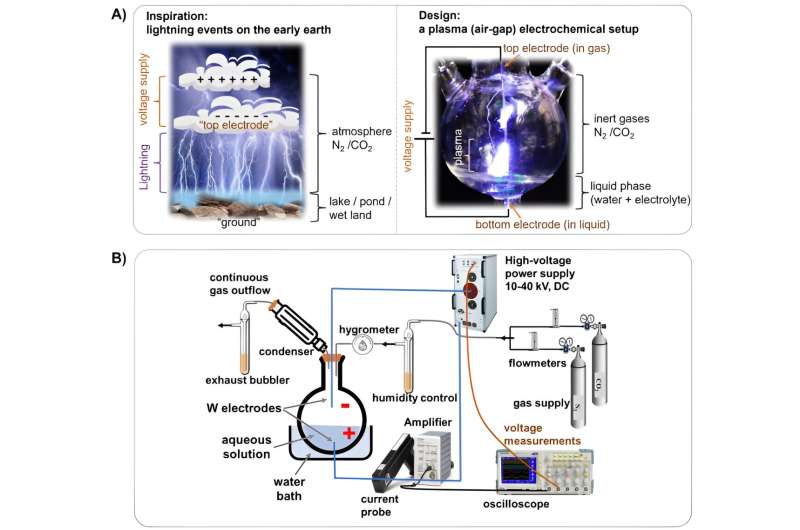
July 30, 2024 by Bob Yirka , Phys.org
Collected at: https://phys.org/news/2024-07-cloud-ground-lightning-generated-blocks.html
A large team of chemists at Harvard University has found evidence suggesting that cloud-to-ground lightning strikes may have helped generate some of the building blocks needed for life on Earth to arise.
In their paper published in the Proceedings of the National Academy of Sciences, the group describes how they set up an experiment in their lab meant to mimic the conditions on early Earth and then studied the results of chemical reactions that occurred as lightning strikes were simulated.
Prior research has suggested that life may have gotten its start on Earth through materials in comets or asteroids that made their way to Earth’s surface. Cloud-to-cloud lightning strikes have also been named as a possible source of such materials.
But as scientists have studied such theories, they have all become less likely possibilities—collisions from objects in space became a rare event not long after the Earth formed, for example, and lightning strikes between clouds is a very inefficient way to generate useful materials.
In this new study, the team at Harvard suggests a much more plausible scenario is cloud-to-ground lightning strikes.
To show that cloud-to-ground lightning might have led to the generation of the building blocks needed for life to form on Earth, the research team set up a biosphere in their lab meant to mimic the conditions found on early Earth. They then generated simulated lightning strikes across air, water and land replicas in the simulated environment. Next, they studied the products that were formed as a result of the strikes, particularly those that wound up in the water.
They found that carbon and nitrogen were both converted into molecules that could have been a part of early building blocks. Carbon for example, was converted to carbon monoxide and formic acid—and nitrogen was converted to nitrite, nitrate and ammonium.
The researchers then added minerals similar to those that would have been present in rocks on early Earth to their virtual environment and then repeated the simulated lightning strikes and subsequent analysis. They found that sulfide minerals were generated, similar to those often found near volcanic eruptions. They also found an increase in the creation of ammonia, which they note, is necessary for life on Earth.
They suggest their findings indicate that cloud-to-ground lightning strikes would have been more likely to create the building blocks for life on Earth than comets, asteroids or cloud-to-cloud lightning strikes.
More information: Haihui Joy Jiang et al, Mimicking lightning-induced electrochemistry on the early Earth, Proceedings of the National Academy of Sciences (2024). DOI: 10.1073/pnas.2400819121
Journal information: Proceedings of the National Academy of Sciences

Leave a Reply